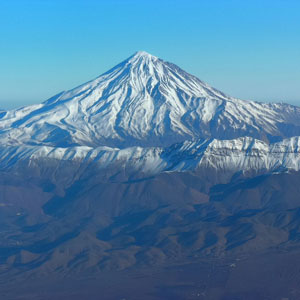 Signin with Google
Signin with Google Signin with Facebook
Signin with Facebook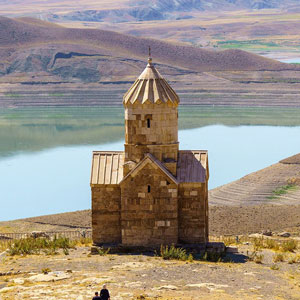
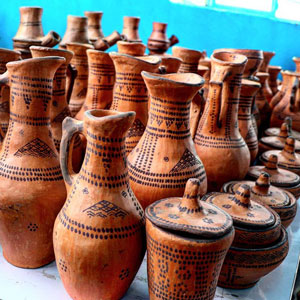
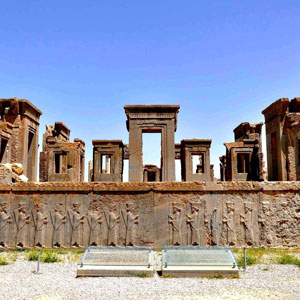 Places,Culture,History
Places,Culture,HistoryPersepolis, the Legacy of Persia
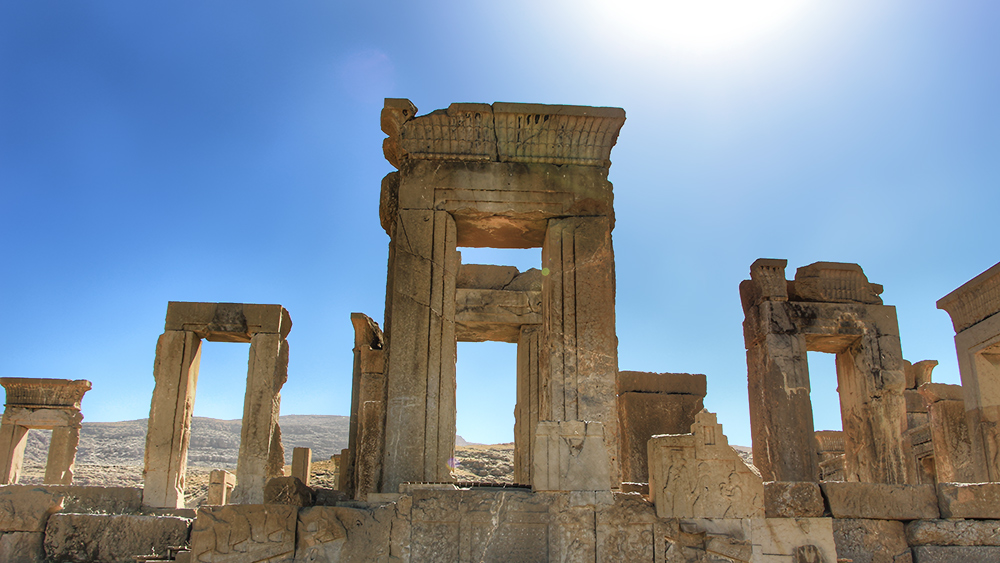
When a New Day Started at Persepolis
One thousand years after Adam, he reigned over the land. Handsome and wise, righteous and sapient, mature and valorous. It was he who built a city with the most beautiful palace in all lands and such a large throne that only demons and angels could move. It was the beginning of the spring when he sat on the throne. The night was out. He could feel the dawn. Horses were loping and birds were singing. Wide-eyed people gathered to see the king of Persia. He reached the terrace before the sun rose. And that was when a new day started and has been called Nowruz (New day) since.
Who Was the King of Persia?
The son of Tahmuras, Jamshid reigned over Persia for more than seven hundred years. He first equipped his territory with armours and weapons to have power against the devil. He then provided cloth for his people: woven and dyed silk and wool. Thirdly, Jamshid melted the iron and mined jewels, made perfumes and discovered wine. Patients gained remedy of their pains from his knowledge and sailors found their way in the waters from his wisdom. He divided his nation into Priests, warriors, farmers and artisans, all of which acknowledged Jamshid to be the greatest monarch of the universe. But then, something happened.
Achaemenid Empire and the Story of Persepolis
Jamshid is indeed a figure in Persian Mythology. Mentioned as the fourth king of the world in the Shahnameh, he is the great priest of Hormazd and the one Takht-e-Jamshid (the throne of Jamshid) got its name from. However, the historical narratives tell us that it was Darius I, the king of kings, who created the place in about 500 B.C. The haunting terrace became known as Persepolis since Greeks called it this way; a monument only the columns of which have remained today. Once the capital of the Achaemenid Empire, Persepolis was inspired by Mesopotamian models. Darius wishes Persepolis to be an emblem of the Achaemenid monarchy, a showplace where the world realized the power of Persia. A power embedded in every elaborated detail: the king conquered monsters, the throne carried by downtrodden enemies, the giant sculpted guardians, the mythical winged bulls, the repeated parades of tribute bearers presenting gifts to the king. These were splendid relives guests astonished by when came to festivals and celebrations, in Particular Nowruz, held in Persepolis for many years.
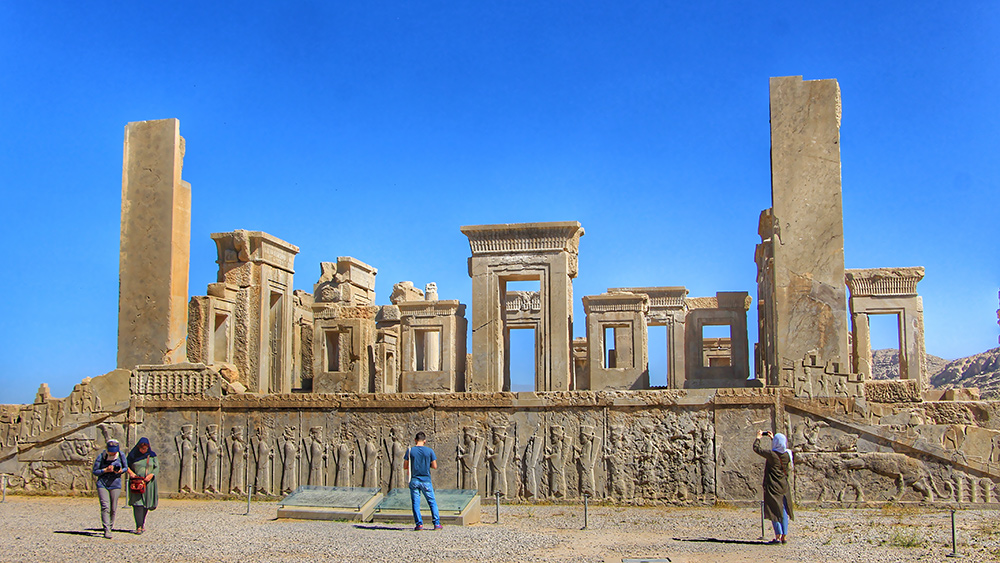
Takht-e Jamshid or Persepolis?
The guests invited to festivals at this 125,000 square meter terrace were not the only people haunted by its architecturally magnificent and artistic glory. For years, after kings came and went, when there was no monument remained from them to be remembered by, people were passing from the place once was called Parsa (The City of Persians) in Persia. They were fascinated by gigantic constructions partly cut out of a mountain and partly built by retaining walls. The most evocative parts of the site for these travellers were the relieves. People saw sculpted friezes where some stories were represented. In these stories, some legendary creatures were moving the king’s throne. Since they were not able to read the inscriptions, bas-reliefs were imagined as indicated the famous story of King Jamshid and its throne. This is why the place was named Takht-e Jamshid. It is still called by this name in Iran. However, in the rest of the world, it is called by the name the Greeks knew, that is, the Persepolis.
What Happened to Persepolis?
Neither Jamshid nor his throne was bestowed in good faith. Ferdowsi, the poet of Shahnameh, tells us how pride and arrogance grew inside Jamshid as he gained power. He forgot all the blessings. Boastful as became him, what was given to Jamshid as divine favour was taken back. Without any power or support, he was eventually killed by Zahhak, the power of whom came from Ahriman, the foe of Hormazd. You may not have heard about Zahhak, a mythological figure, but you have definitely heard the name of the conqueror who shaped the destiny of Persepolis: Alexander the Great. The tragic twist of Persepolis’s fate was to be burnt by a man who is said that wanted to take revenge for the destruction of Greek temples by the Persians. Whether a vengeance or not, the flames of fire in Persepolis terrace became the light of the beginning of a new era in the history of Iran; an era with a rich background and still-spectacular remains that earned a place in the Unesco’s world heritage list.
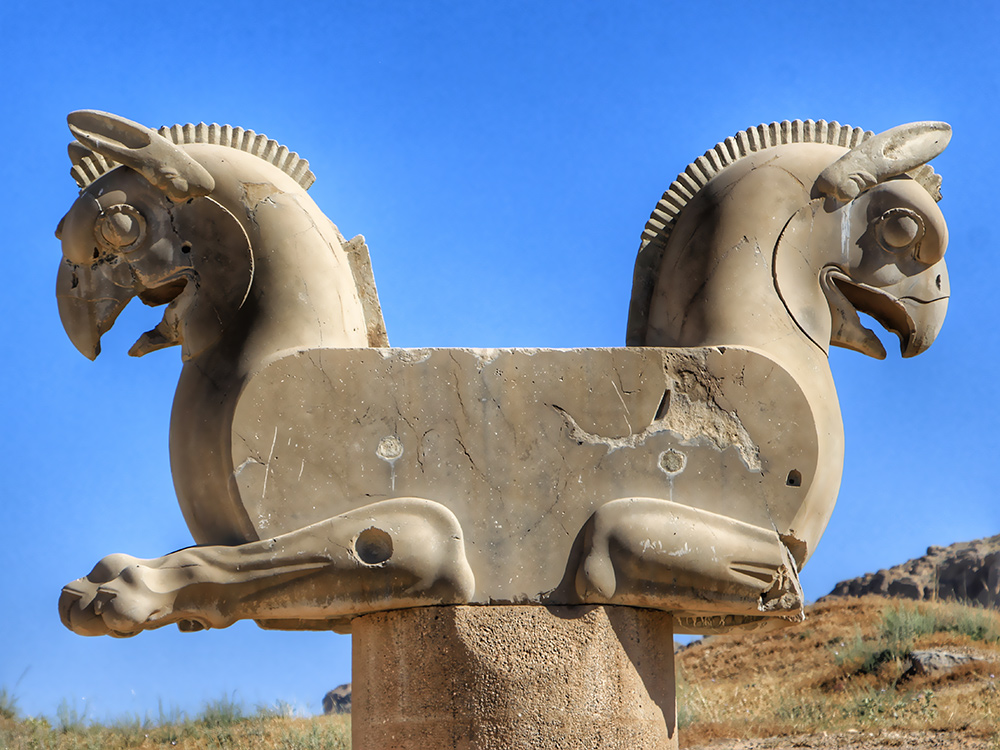
Where is Persepolis Today?
Located near the city of Shiraz, the ruins of Persepolis (Parsa) rest at the hillside of a mountain called Rahmat. The site was first excavated by a French archaeologist in the 1930s. Persepolis, which exemplifies the best of the Achaemenid style in architecture, is indeed a complex including a number of constructions such as Apadana Palace, the Gate of Nations and the Throne Hall. The ceiling was originally made of wood burnt by Alexander the Great. The double flight of stairs is considered to be an extravagant creation in architecture. But the significance and the nobility of Persepolis go beyond. The uniqueness of this seat of government of the Achaemenid Empire is such that it is described by UNESCO as being ranked “among the archaeological sites which have no equivalent and which bear unique witness to a most ancient civilization”. As is evident, all facts and stories in the history of Persepolis indicate why this alluring archaeological site has to be placed on the top of any traveller’s list.
By Sepideh Eghtedari / TasteIran

